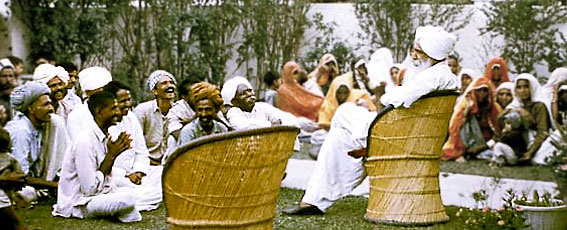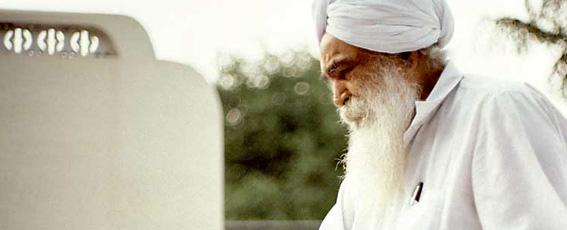From the book "The crown of life", written by Sant Kirpal Singh
This study of comparative yoga was initially stimulated by the various queries on the subject which kept puring in from seekers and disciples in the West. But in trying to answer them in a systematic and comprehensive manner, it has grown into something much larger than its original intent. As it has now evolved it may, I hope, be of service not only to those whose questions first led to its writing, but to all seekers in general who wish to understand what yoga is, the varieties of its forms and their respective modes and spiritual efficacy.
In this age of publishing, there is no dearth of books on yoga. However, if one scrutinizes them carefully, one finds that the majority fall short in one direction or another. They either treat it as primarily a system of asanas and physical exercises, or as as abstract and highly monistic system of thought, positing the unity of all existence and the ultimate oneness of the individual soul and the Oversoul. In either case, the view of yoga that we gather is an incomplete one, reducing it from a practical mode of spiritual transcendence and union with the Absolute, to a system od physical culture or school (or group of schools) of philosophy.
To avoid the possibility of such error, the ultimate aim of all yoga, at-one-ment with the Supreme Lord, has been kept as a focusing point for all discussions in this study. All the important forms, ancient and modern, are taken up in turn, their practices explained and discussed, and the extent to which each can lead us toward the final goal evaluated. This last is perhaps the most easily misunderstood and the most widely confused aspect of a comparative study of yoga. It is a characteristic of mystic experience that the soul as it ascends to a plane higher than the one to which it is accustomed, tends (in the absence of superior guidance) to mistake the higher plane as the very highest, the Absolute Realm. And so we find that most yogas, while taking us up to a certain point on the inner journey, mistake this for its end, and for a relative validity claim for themselves an absolute one.
The only way by which we can effectively evaluate the comparative spiritual value of each yogic form and so escape the present state of confusion, is by adopting as our standard the very highest form of yoga, whose potency is absolute and not merely relative. This standard is provided by the Surat Shabd Yoga, also known as Sant Mat (or the Path of the Sants or Masters of this mystic school), the veritable Crown of Life. By following its practices under proper guidance, its adepts have reached realms not known to other mystic schools, and have finally merged with the Supreme Lord in His Absolute, Nameless and Formless State. They have, in their compositions, repeatedly affirmed the incomparable superiority of this Yoga of the Sound Current and, while describing through direct inner perception the varying spiritual range of other yogas, have gone on to expound the absolute nature of their own.
Once a seeker can begin to grasp the perspectives on comparative mysticism which Sant Mat can provide, he will, I believe, find this extremely complex subject becoming progressively clearer to him. He will see that the contradictions which disturb so many when they first undertake a comparative study of mysticism are not essential to mystic experience as such, but are the result of a confusion of a relative truth with an absolute one, and error which does not exist for those, who by following the highest path have experienced first-hand all the inner states, and know the points up to which each yoga can lead. He will not longer be tempted to evade the issue of spirituality by dismissing it as a mere remnant of old superstition and black magic but will begin to see it as a kind of timeless inner science with its own unchanging laws and varying modes of operation, with knowledge which is not static, but has developed as men have moved from lower to higher forms of yoga. And above all, he will, I hope, relize that mergence with the Supreme Lord is not mere day-dream or hypothetical postulate of a monistic school of philosophy, but a living possibility whose realization is the true and of human existence and whose attainment, given the right guidance, the right method and the right effort, lies within the reach of all, irrespective of age, sex, race or creed.
Sawan Ashram, Delhi, June 6, 1961
Kirpal Singh

















